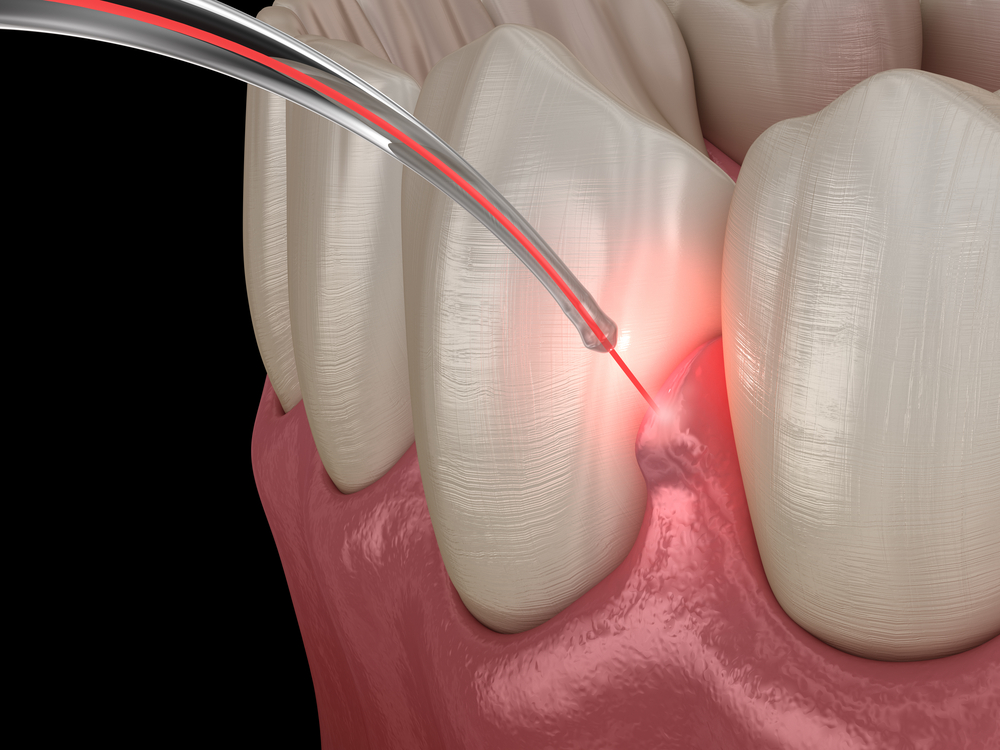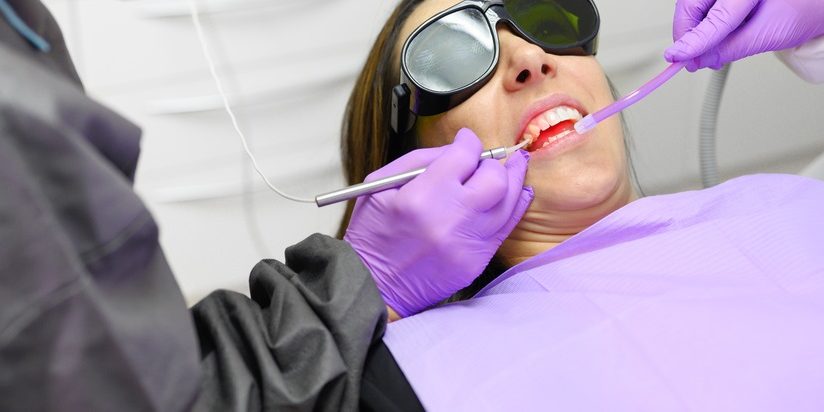
Dental Laser Technology – Illustration
Laser dentistry is one of the newest dental technologies. Dental lasers assist with many dental facets including gum treatments and reconstructions, tooth decay removal, root canals, and simple cleaning. Before dental lasers were declared mainstream in the 90s, oral care was handled primarily by scraping or drilling. Now, there is a less invasive way to perform dentistry tasks that won’t leave a patient in excruciating fear and pain.
How Dental Lasers Work?
Lasers work by transferring energy in light form. In dentistry, lasers are used either as a direct source of heat to enhance tooth bleaching or can be used as a tool for precision cutting. This tiny laser can fit between the small gaps between the teeth and gums, which makes it a perfect instrument for practices that require extreme exactitude.
What Are the Benefits?
When a dentist’s office employs the use of dental lasers, it can be deduced that their practices include those that are practical, safe, cutting-edge, and effective. There are many different uses and benefits for the utilization of these lasers.
Minimal Pain and Bleeding
Since there is no need for scrapers, scalpels, or drills, the laser tool ensures less pain for the patient and fewer problems for the dentist. Procedures performed with a dental laser are done with extreme accuracy, so there is less room for painful errors.
Lasers are high emissions of light and can give off heat. This beam of heat energy helps with blood clotting and decreases blood loss and the chances of bacterial infections.
A nice added benefit to the lasers is the absence of noisy drilling. Usually, dentist’s offices are synonymous with the whirrs and buzzes of drills grinding against teeth. Without this, patients are bound to feel much less anxiety.
Less Anesthesia
Since there are fewer chances for pain and evasive techniques, there are fewer instances of anesthesia being used. In this case, those allergic to anesthesia medicine have less to worry about. Some procedures performed by dental lasers can be done with absolutely no anesthesia whatsoever.
Quicker Healing
Laser dentistry decreases the odds of tissues being damaged in the process. In turn, that means less healing time and uncomfortable toothaches. Furthermore, without the need for a dentist to constantly reach for new tools to perform their job, the dental task will take less time.
What Dental Treatments Can Be Performed?
It would be nice if every dental procedure could just be handled with dental lasers, but that’s not always the case. The usual types of treatments performed by laser dentistry are hard and soft tissue procedures such as:
Dental Fillings
This is one of the procedures that don’t need local anesthesia. The lasers vaporize germs and bacteria from the tooth without causing damage to the tooth itself. At that point, restorative materials can be added and bonded to the tooth.
Growth Removal
The dental lasers can carve out growths from the gums and cheeks. Benign cells can be targeted after selecting the proper laser wavelength and removing tumors, cysts, and other types of polyps.
Tongue Ties
Found commonly in young children, tongue ties occur when the skin fold under the tongue (frenulum) is too tight or thick. A dental laser can help correct this with a laser frenectomy.
Of the many different procedures that can be performed, each one can be seen as a pain-free, low-hassle alternative.







